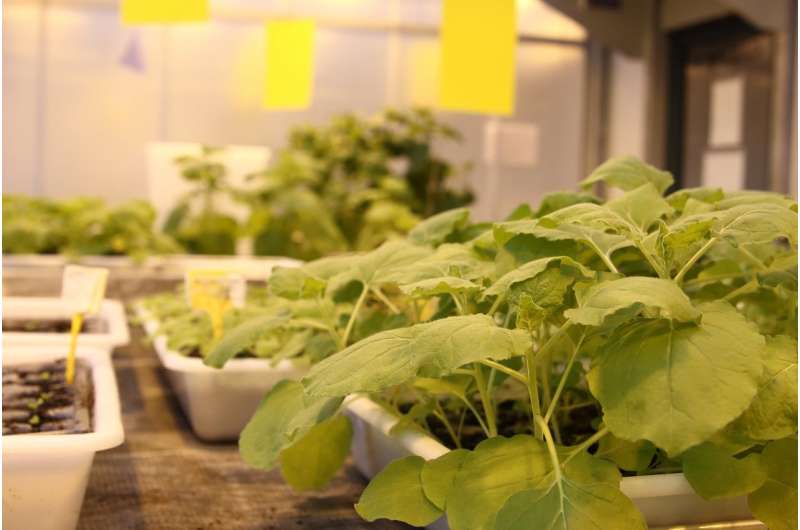Plants as efficient antifungal factories

Researchers report that they can efficiently produce antifungal proteins in plants based on a modified tobacco mosaic virus. The results of this research, which could have a major impact in the agri-food industry, have been published in the Plant Biotechnology Journal.
The fungi that cause diseases in plants, animals and human beings represent a serious threat for health, food safety and ecosystems. Every year, more people die from fungal infections than from malaria. Furthermore, fungal infections can have fatal consequences for immunosuppressed patients from diseases such as HIV or chemotherapies used to treat cancer. Fungi also typically represent a challenge for food safety because they destroy the main crops on a worldwide level and also pollute human and animal foods with mycotoxins which are harmful for their consumers.
María Coca, researcher of the CSIC in the CRAG, says, "We currently only have limited numbers of antifungal agent classes, and even these are not totally effective due to the hosts developing resistances and the existence of potential undesirable secondary effects. This is why there is an urgent need to develop new antifungals that improve those that already exist and which may be applied in different fields, including crop protection, post-harvest, material and food preservation, and human and animal health."
CSIC researcher José Antonio Darós, who works at the IBMCP, says, "In this project, we have focused on the antifungal proteins secreted by filamentous fungi, which are small but highly stable proteins with strong specific activity against fungal pathogens, which could be used to develop new antifungal therapies in medicine and agriculture. The problem is that their use requires efficient, sustainable and safe production systems."
The researchers have used a modified virus based on the tobacco mosaic virus to produce these small antifungal proteins in Nicotiana benthamiana, a plant from the tobacco family which is often used in research. "With this method, we have been able to produce large amounts of antifungal proteins against the Aspergillus giganteus and Penicillium digitatum fungi. We have also verified that these antifungal proteins are totally active against these pathogens, and that a fluid which contains these proteins can protect the tomato plant from the Botrytis cinérea fungi, more commonly known as grey mould," says Darós.
More information: Xiaoqing Shi et al. Efficient production of antifungal proteins in plants using a new transient expression vector derived from tobacco mosaic virus, Plant Biotechnology Journal (2018). DOI: 10.1111/PBI.13038
Journal information: Plant Biotechnology Journal
Provided by Asociacion RUVID



















